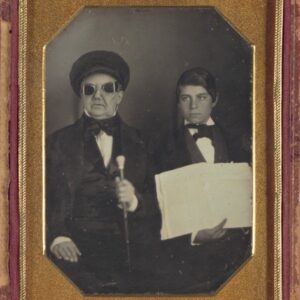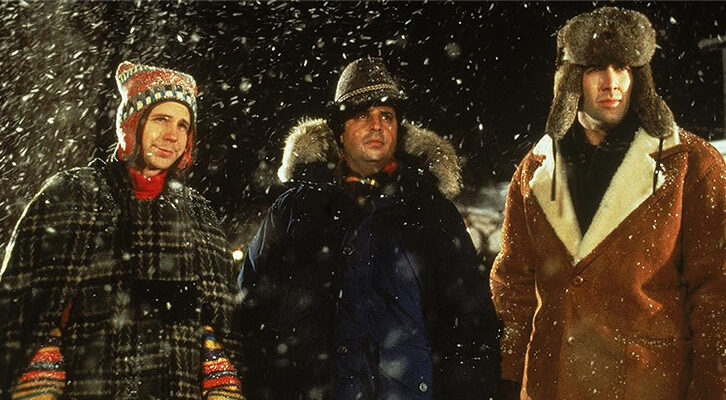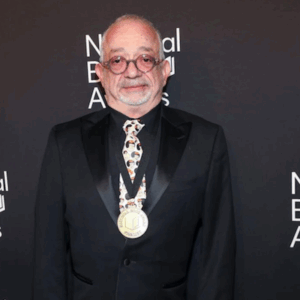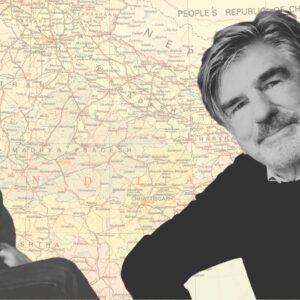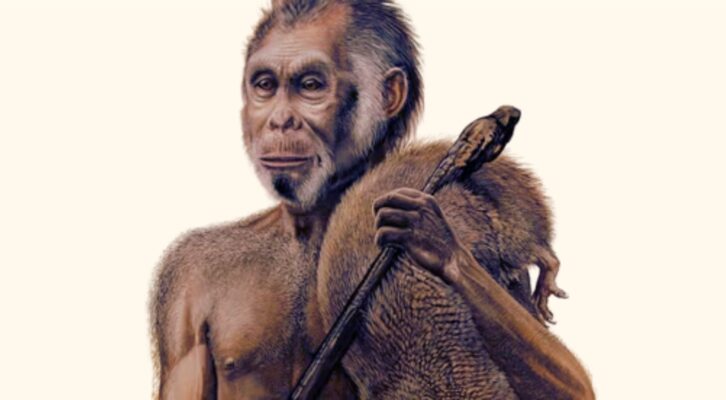
The Murky Story of Our First Storytellers: On the Mysterious Evolution of Human Language
Madeleine Beekman on Early Humans, Linguistic Acquisition, and the Glaring Gaps in Our Theories
In How Language Began, author and linguist Daniel Everett makes the controversial claim that our ancestors had been chatting with each other well before our species evolved. In which case, language couldn’t have been the distinguishing factor in our species’ triumph over all others. Everett’s proffered evidence is that a possible offshoot of Homo erectus—dating back roughly 1.89 million years—got stranded on the Indonesian island of Flores, where it evolved into The Hobbit, Homo floresiensis.
To get to Flores, Homo erectus had to cross the Wallace line, the deep-water channel that prevents the movement of most animals (and to a lesser extent plants) between Asia and Australasia, resulting in strikingly different faunas between the two regions. The deep-water channel runs down through the Lombok Strait that separates Bali and Lombok.
Flores is east of Lombok and thus east of the Wallace line, so that the ancestor to The Hobbit had to cross the deepwater channel. And for that, Everett argues, our early sister species must have used some form of language to plan the trip and build their rafts.
Others have argued that a massive storm could have blown the ancestors of The Hobbit to Flores from adjacent islands, clinging to debris. But my social insects illustrate a deeper problem with the early language idea. As we’ve seen, honeybees can easily coordinate their move to a new nest site through dance—a kind of communication, to be sure, but nothing nearly as sophisticated as our abstract, compositional language.
In fact, fire ants build rafts using their own bodies when their underground nests flood from rainfall—without using any means of communication. Rafts that, of course, are disanalogous to human rafts in countless ways, but still show how little language or planning is strictly necessary for engineering projects in the wild.
Only when talking about humans and our ancestors do we feel compelled to assume extraordinary circumstances.
And what are we to think of the other large animals that got stranded on Flores? Because The Hobbit was certainly not alone. Massive Komodo dragons and half-ton elephant-like creatures are salient examples of other animals “stuck” on the island. No one is arguing they could speak or build rafts, yet somehow they, too, crossed the Wallace line. (It may be that the Komodo dragon crossed from east to west instead of from west to east. But cross the channel it did.)
Only when talking about humans and our ancestors do we feel compelled to assume extraordinary circumstances. As Carl Sagan once said, extraordinary claims require extraordinary evidence. I see no such extraordinary evidence that points toward a speaking ancestor to The Hobbit.
Now might be the time to define language a bit more precisely. Language is more than communication, as everything alive communicates in one way or another: to organize mating or to get together for other reasons. Even bacteria communicate; they send out chemical signals that other bacteria respond to, allowing them to form large aggregations. Biofilms are a good example of such aggregations; and a good example of a biofilm is the plaque that forms on your teeth.
Language is a computational cognitive system that allows the combination of a finite number of symbols—words—to be combined, following a set of rules—syntax—to construct an infinite number of sentences. That rather technical definition translates to a simple concept, nonetheless. Language allows us to talk about everything we want to talk about, even things that aren’t real, aren’t present, existed in the past, or may exist in the future.
According to the historian Yuval Noah Harari, that ability—talking about unreal things—is key to our success. By telling stories, our species became the unrivaled ruler of the earth, with devastating consequences. Harari’s Sapiens: A Brief History of Humankind explains how we, in the blink of an eye, not only got rid of all other species of Homo but also invented, and believed in, fictional things such as nations, religion, arts, and money.
Sometime in our recent evolutionary past, the cognitive revolution took place, which transformed our species from being just another Homo among several to one of the most powerful living forces the earth had ever seen. (Not the most powerful force on earth; arguably, photosynthesis deserves that honor because without photosynthesis no animal life would have been possible.)
Language allowed our species to build strong social relationships through shared stories, forming large and powerful groups that were no match for the smaller groups of sister species.
Through stories, our species collectively believed in things, and that collective belief led unrelated individuals, even strangers, to interact positively with each other. Just like modern children invent passwords to limit membership in the club, our ancestors used shared stories to determine who is “in” and who is “out.”
Once we were able to tell stories, and invent an imaginary world, our species’ behavior changed rapidly, and innovations outside of genetic changes were quickly transmitted to the next generation. In other words, cultural evolution took over from genetic evolution, swiftly transforming our species and so the world. But before we started to tell stories, we needed to invent language.
What Yuval Harari leaves unexplained is how we acquired language during this cognitive revolution. How did a little bit of storytelling lead to a boost in reproductive success? Would a half-baked story really have given our species a big enough advantage? Yes, once we had language, things would never be the same; but storytelling cannot have been the key that unlocked our species’ potential.
Perhaps Harari’s cognitive revolution went something like what was envisaged by Harvard professor of human evolutionary biology Joseph Henrich. In the beginning, our ancestors were already excellent learners and inventors. When watching someone use a tool, a procedure, or trick to solve a novel problem, the observer could remember that particularly awesome solution and perhaps combine that trick with some other innovation they’d learned from another person.
By combining the innovations from several individuals, our ancestors enhanced their individual and collective toolkits. They became smarter. Henrich refers to this period of learning and copying as cumulative cultural evolution. Possibly at the dawn of Homo, our ancestors crossed a point at which cultural evolution became the driving force, propelling genetic evolution toward what would ultimately become us.
The cognitive revolution, then, was the result of our ancestors’ increased skills and knowledge, leading to the need for the brain to catch up to be able to hold so much information. That cognitive revolution was driven by genetic changes, by selecting for individuals who had the right complement of genes for higher cognition. This relentless selection for higher cognition led to an increase in brain size, until the brain became so large it started to hinder babies’ births.
Around two hundred thousand years ago, the increase in brain size came to an end. Homo sapiens had arrived. Henrich has used the tragic fate of many explorers of new territories to illustrate the importance of culture. The European explorers of the eighteenth and nineteenth centuries had an expansive cognitive toolkit, knew how to use tools, and had language.
Yet, many succumbed in unknown lands through a lack of food or water, while surrounded by both. Why? Because they did not have the cultural knowledge to know what to eat, how to prepare it, and where to find water. Key to our species’ success, Henrich argues, was the need to acquire, store, organize, and retransmit the growing body of information created by the cultural evolution that allowed us to adapt to our environment, outside of genetic change.
And all that cultural information is stored in a large number of brains—the brain collective. Somehow, somewhere during that cultural revolution, language appeared as another means, a very effective means, of transmitting cultural knowledge.
The point that Henrich makes about the need to be taught what to eat and where to find it is an interesting one. But that need is not restricted to humans. The cassowaries that regularly visit our property (or rather, visit a place they have long inhabited and where we have recently come to reside) keep track of what tropical trees are producing fruit and when.
Almost like clockwork, the magnificent birds appear for as long as the tree produces its fruit, or until something better somewhere else is yielding its fruit. Dad looks after the chicks, and in so doing, teaches the young ones the idiosyncrasies of their environment, saying something like “In November we go to the creeks for the river figs. When they run out, we search for the blue quandongs that grow on the higher ground.”
The chicks spend about a year with their Dad, which is enough time to learn the annual cycles of the fruit trees in their environment. If adult birds are relocated to another area, as they sometimes need to be, they may struggle to find food for a year or two.
The authors of The First Idea, Stanley Greenspan, M.D., and philosopher psychologist Stuart Shanker, go so far as to say that language and symbolic thought cannot be explained at all by genetics or natural selection. Instead, those capacities are socially reinvented with every successive generation. In the space of a childhood, all our adaptive skills, accumulated collectively, over tens of thousands of years, are relearned.
In a process reminiscent of Ernst Haeckel’s (incorrect) idea of ontogeny recapitulating phylogeny—the thought that as an embryo develops it retraces its evolutionary history—Greenspan and Shanker see our own evolutionary history reflected in each child, as it develops from a tiny mind reader into an accomplished storyteller.
These careful scientific and historical minds all put the cart before the horse.
Our cognitive abilities developed not so much as a revolution but, rather, as a gradual process, through social interactions passed on through the generations via learning. And again, somewhere, at some time during that process, language made its appearance.
Regarding these arguments, I agree that cultural evolution has changed us more rapidly than natural selection ever could have. But these careful scientific and historical minds all put the cart before the horse. Cultural evolution took off only once we had the ability to speak, not vice versa.
______________________________

Excerpted from The Origin of Language: How We Learned to Speak and Why by Madeleine Beekman. Copyright 2025 © by Madeleine Beekman. Reprinted by permission of Simon & Schuster, an Imprint of Simon & Schuster, LLC.
Madeleine Beekman
Madeleine Beekman is the author of The Origin of Language. She is the professor emerita of evolutionary biology and behavioral ecology at the University of Sydney, Australia. In the academic year of 2020–21, Beekman was a resident fellow at the Institute for Advanced Study in Berlin (Wissenschaftskolleg zu Berlin), which is where the idea for The Origin of Language was born. She currently lives with her husband in Australia’s northern tropical rainforest, where she can observe the endangered cassowary from her office. She has two adult daughters and a tiny granddaughter.









